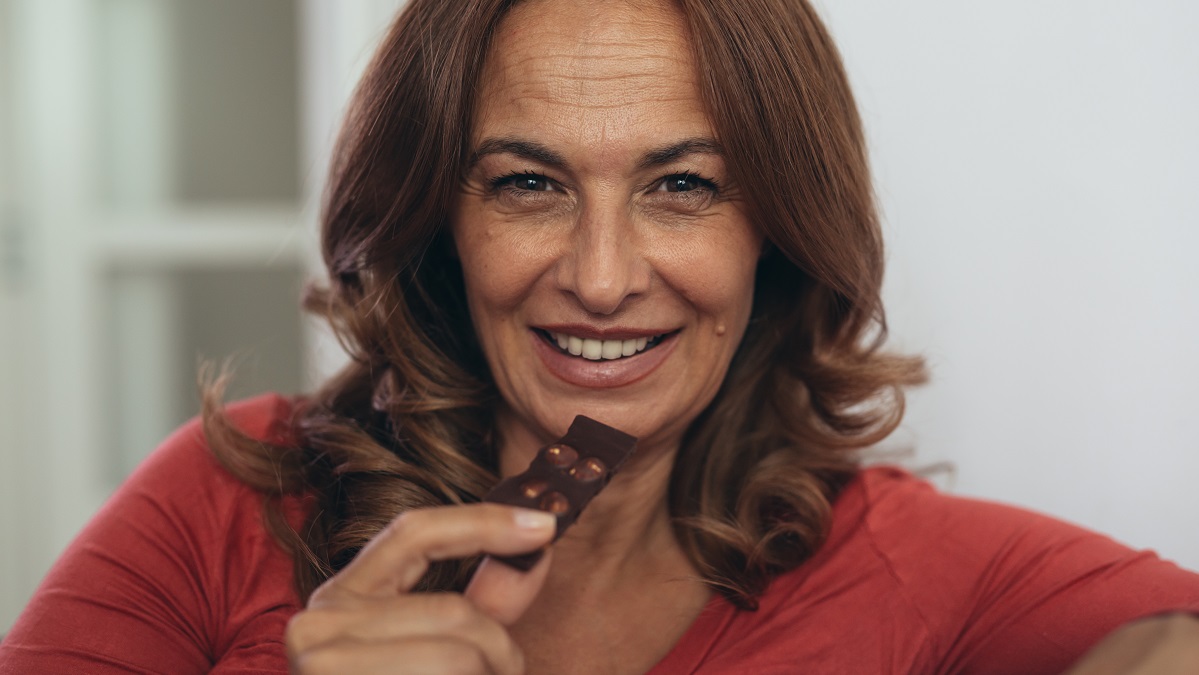Do you love chocolate but feel guilty about the calories? Help may be at hand.
Scientists have investigated what happens when you eat chocolate and are hopeful their research will lead to the development of a new generation of luxury chocolates that deliver the same sensation without the guilt.
Researchers from the University of Leeds did a deep dive into what happens when chocolate makes contact with the tongue. They analysed the reactions that take place as chocolate changes from a solid to a smooth emulsion – a sensation many find totally irresistible.
They concluded it was the fat in chocolate that is pivotal to that pleasurable sensation.
Read: The surprising link between high-fat diets and pain
The underlying key to the sensation, they say, is lubrication. Once the chocolate is in your mouth, the pleasure arises from the way it is lubricated – from ingredients in the chocolate itself or from saliva or a combination of the two.
Fat plays an important role here, but only when contact between tongue and chocolate is first made. After that, it’s the solid cocoa particles that become important in terms of taste and sensation.
That being the case, it means the fat deeper inside the chocolate plays a much smaller role in the process. In theory, that means the fat contact could be reduced without having an impact on the feel or sensation of chocolate.
That suggests the fat needs to be incorporated only into the outer layer of the chocolate.
Read: How ‘brown fat’ and an icy swim may help you lose weight
Anwesha Sarkar, professor of colloids and surfaces in the school of food science and nutrition at Leeds, explains: “If a chocolate has 5 per cent fat or 50 per cent fat, it will still form droplets in the mouth and that gives you the chocolate sensation.
“However, it is the location of the fat in the make-up of the chocolate that matters in each stage of lubrication, and that has been rarely researched.”
Until now.
“We are showing that the fat layer needs to be on the outer layer of the chocolate – this matters the most – followed by effective coating of the cocoa particles by fat, these help to make chocolate feel so good.”
The researchers used an artificial 3D tongue-like surface designed at the university. Tests were conducted on a luxury brand of dark chocolate. (I would gladly have offered my services for the good of science!)
Read: Jamie Oliver’s Chocolate Orange Party Cake
They used analytical techniques from a field of engineering called tribology – the study of how fluids and surfaces interact – to conduct the study, which was published in the scientific journal ACS Applied Materials & Interfaces. This gives a clue to the fact that it focuses purely on the mechanics involved in eating chocolate. In this case, taste is not being researched.
So what is the takeaway from these revelations?
Lead author Siavash Soltanahmadi sums it up best: “We believe dark chocolate can be produced in a gradient-layered architecture with fat covering the surface of chocolates and particles to offer the sought-after self-indulging experience without adding too much fat inside the body of the chocolate.”
That’s quite a mouthful, but if it leads to a mouth full of pleasure with less fat, it will be well worth it.
The add-on is that these insights into how food feels in the mouth can lead to products with better taste, texture or health benefits.
Are you a chocolate lover? Does its fat content mean you eat less than you’d like? Why not share your thoughts in the comments section below?

